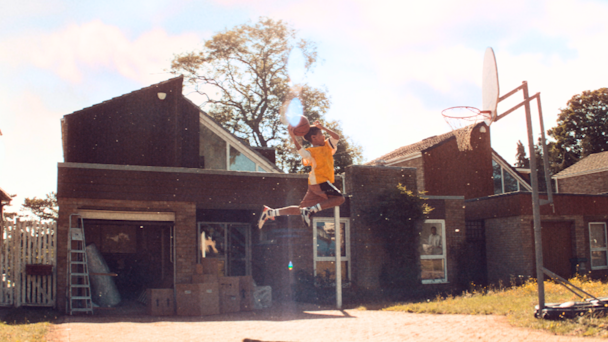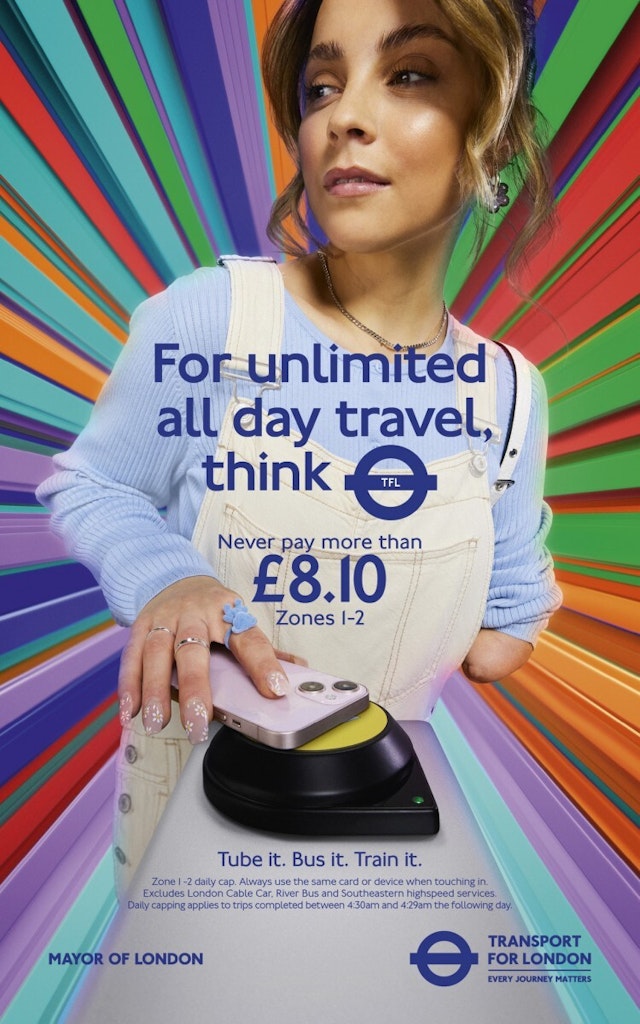The power of good disability representation lies in the incidental
It's 2023. Mike Alhadeff, senior strategist at AMV BBDO, believes it’s time for more naturalism in how brands represent people with disabilities.

There are 250,000 people in the UK with a missing upper limb, representing 0.38% of the UK public. At this point, you may wonder why I have alighted on this stat and what it has to do with advertising.
Well, it is because two recent campaigns have come out featuring someone with a missing upper limb – one for TfL.

Advertisement
And one for Land Rover Defender – which I find pretty remarkable, given the above statistic.
Of course, it must be said they represent the wider disability community and the diversity within society that comes from that. Still, in a specific sense, they represent a very small part of the population (no doubt powerfully so).
However, what I find more interesting is that it provides the opportunity to compare the two ads side by side, providing an A/B test, perhaps a third planning trait.
Advertisement
In particular, it helps highlight what good representation looks like when it comes to disability in ads and, hopefully, a blueprint for success in the future.
In the TfL example, a young woman is featured using an Oyster card as she aims to take advantage of London’s public transport network. She just happens to be missing an upper limb. The disability is very much incidental to the message being conveyed.
The ad for the new Defender, as part of their sponsorship for the Rugby World Cup, is different. A young boy who is also missing an upper limb is featured, but this time, the ad is centered around his disability.
A sympathetic view is that it portrays overcoming disability and a rather tenuous link back to the Defender, i.e., both are good at overcoming obstacles. It, however, strays more into the realm of ‘Inspiration Porn’ – a term coined by the late Australian comedian Stella Young almost a decade ago – of trying to create an uplifting moral message mainly aimed at the benefit of a non-disabled audience.
This makes the comparison so interesting – it starts to light the path of future direction. Yes, representation is difficult, including when it comes to disability, but you start to see the clear contours of success when you compare the two ads.
Suggested newsletters for you
Good ones show disability as an everyday occurrence, part of the fabric of society, but crucially incidental to the idea they are trying to communicate. This provides a level playing field – no wider point is being made about disability apart from the fact they are consumers just like anyone else (and for clients have money to spend).
It becomes more problematic when an idea starts to center around disability in itself for some of the reasons mentioned above. But perhaps crucially, it continues to set disability apart rather than as part of everyday life.
The good news is that there are already plenty of examples of brands doing this in the UK and abroad. For instance, Rightmove “incidentally” features a young son wearing a hearing aid.
To McDonald’s ‘incidentally’ featuring sign language in its latest delivery ad. Meanwhile, over in Australia, the Shift 20 Initiative, while more overt in its aims, also aims to show disability as part of everyday life within an advertising context.
The key theme across them is that disability is not an idea but a means of showing a more representative society. But perhaps an even wider point here is how much the conversation has developed over time. While there will always be the question of personal taste, the most remarkable thing is how many examples of disability within advertising can be found, including two featuring missing upper limbs.

